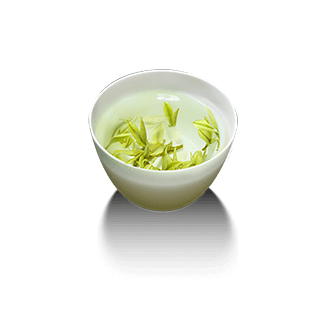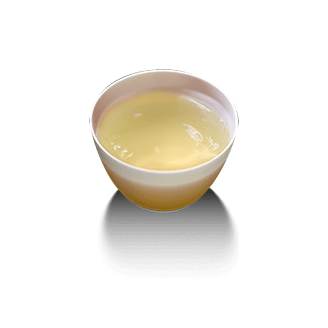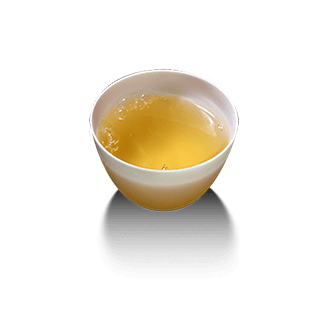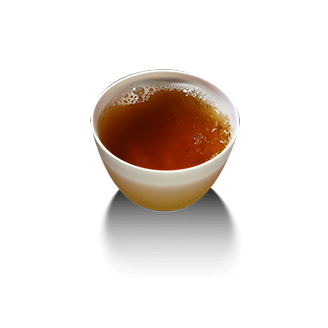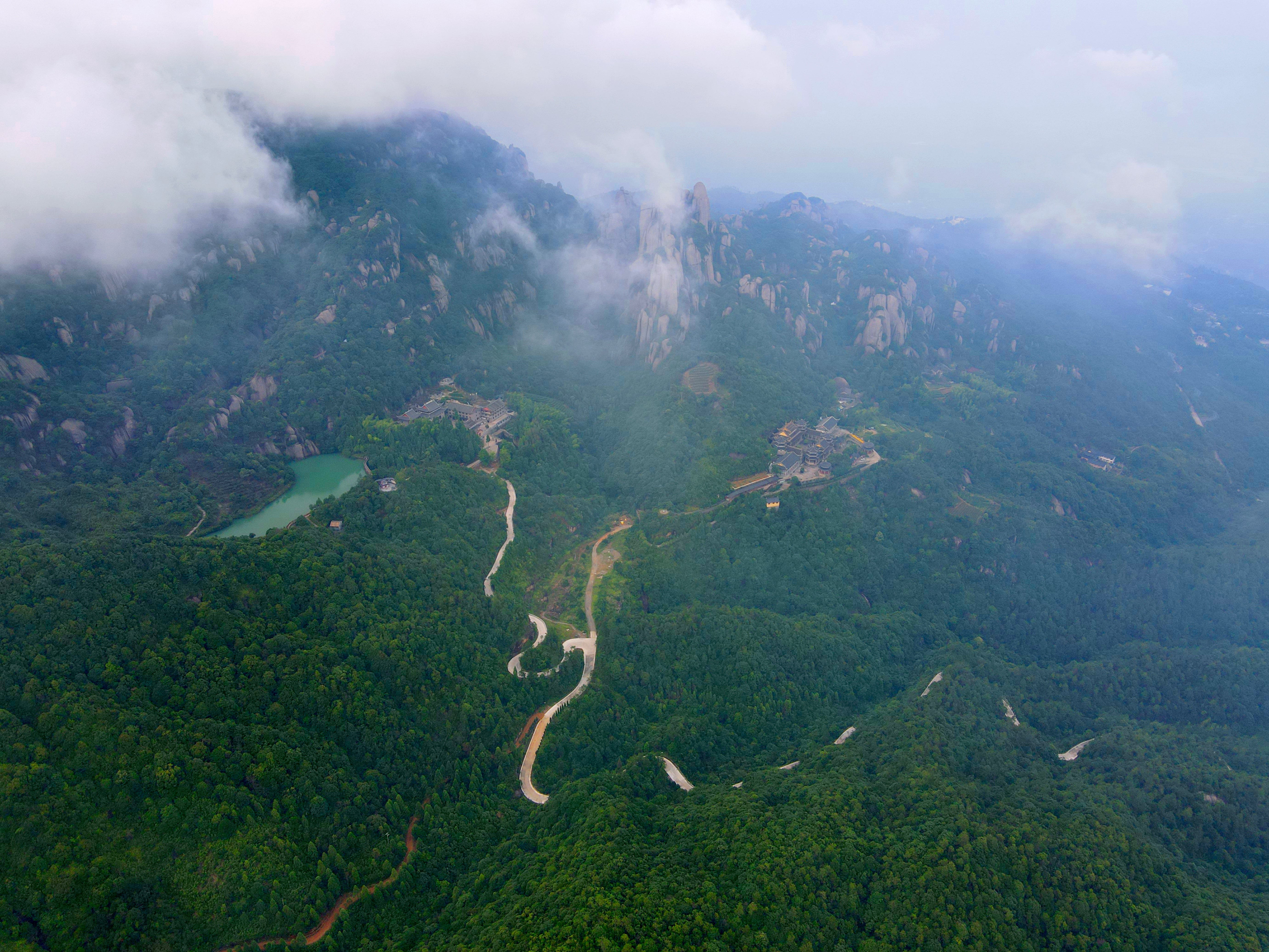
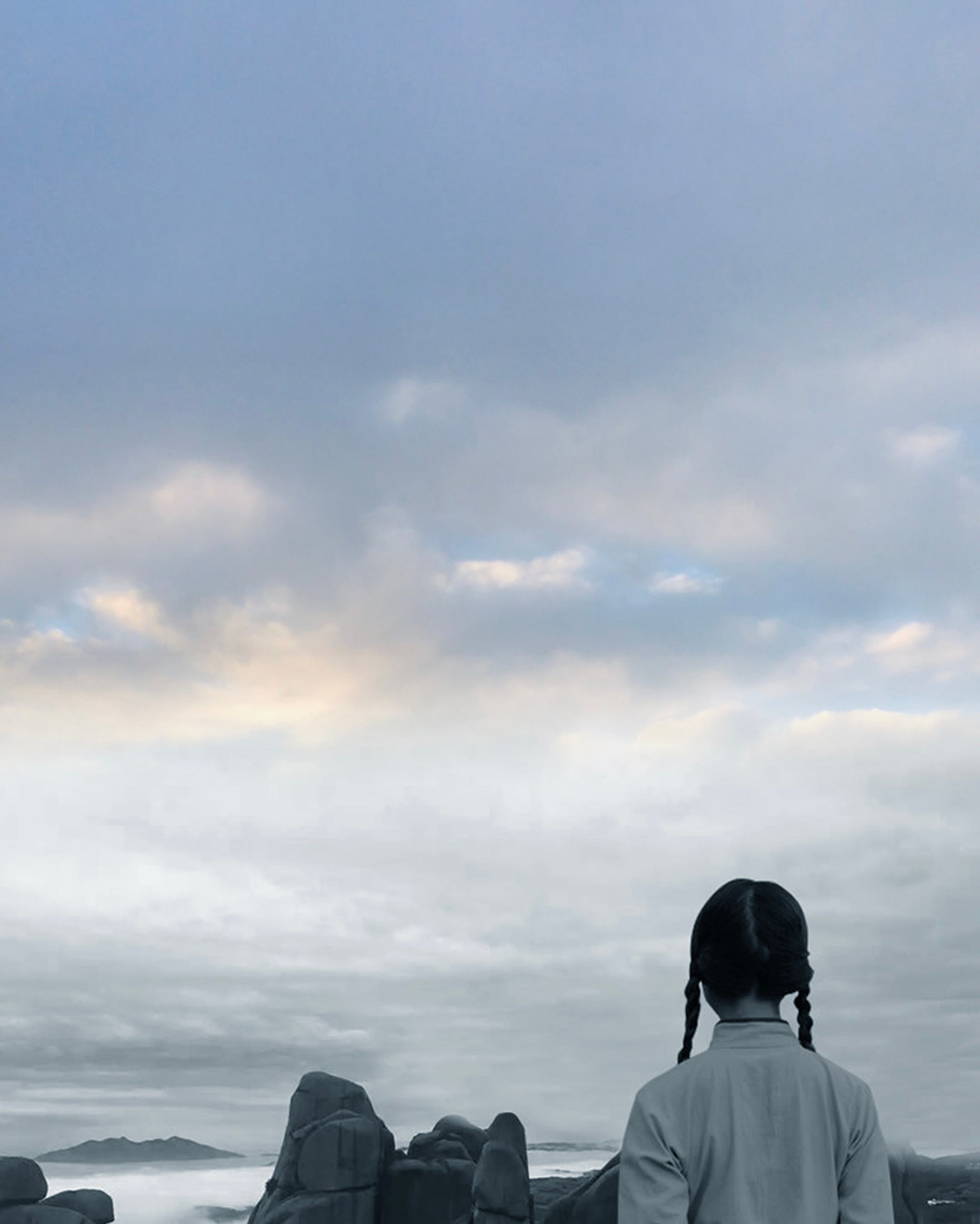
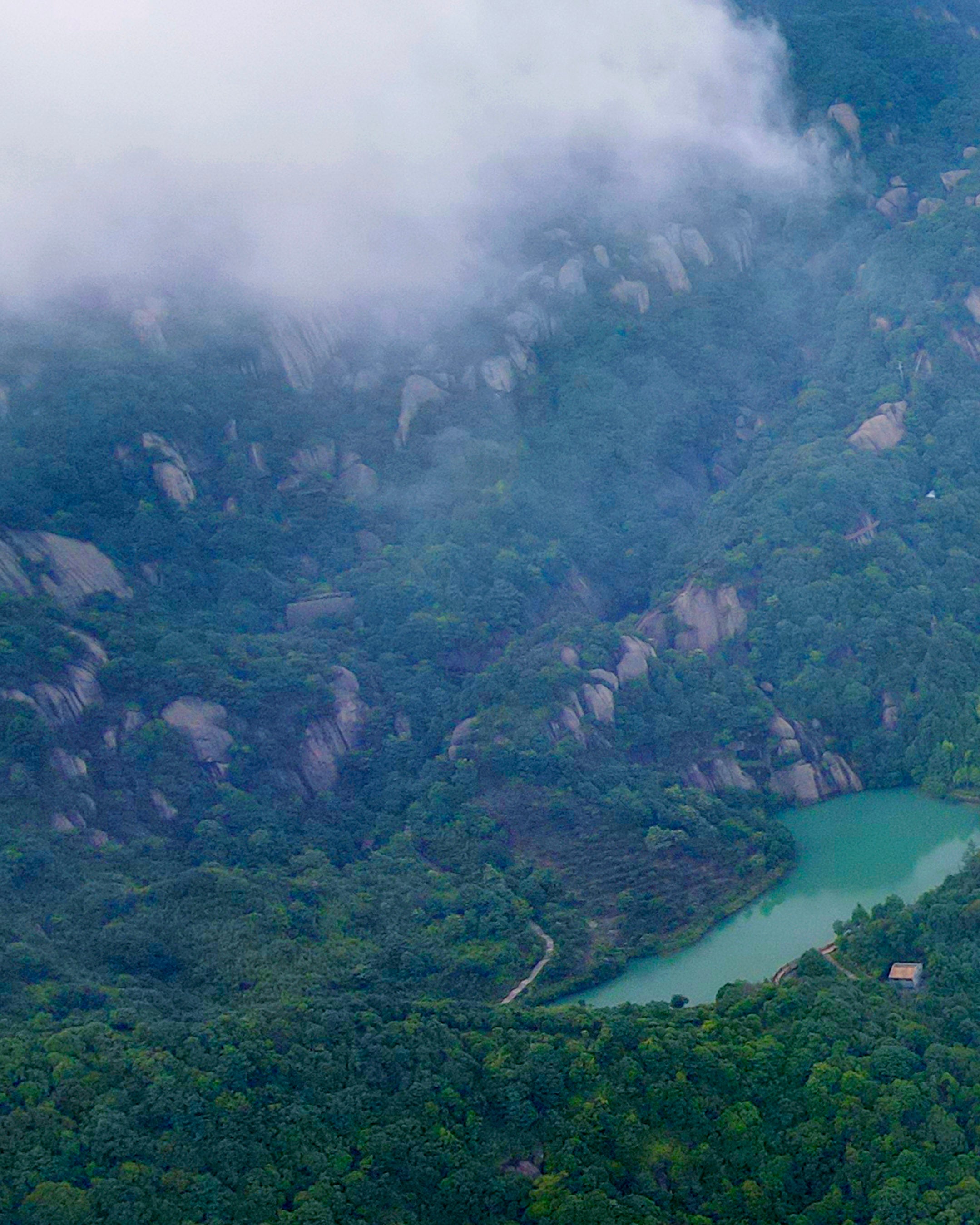
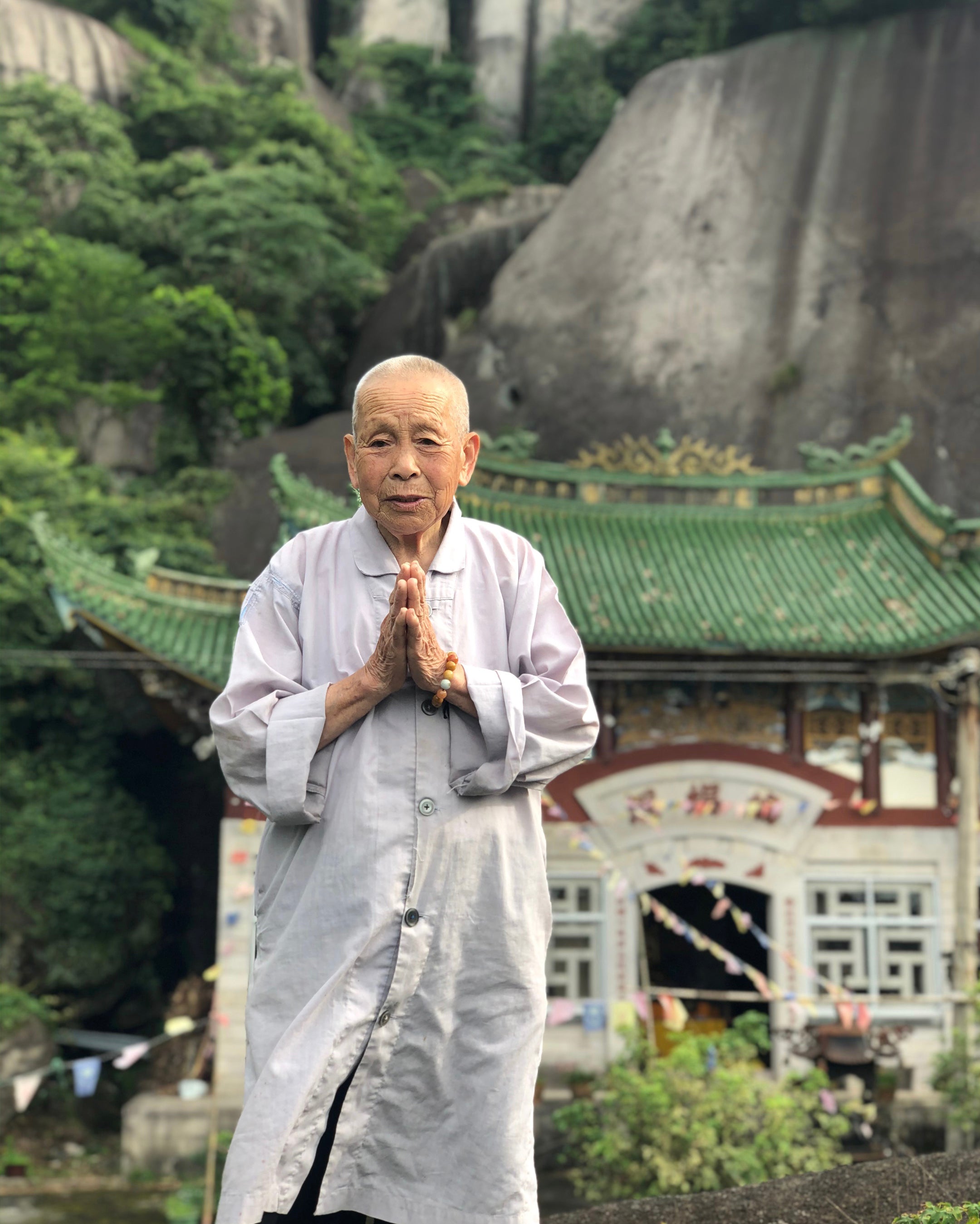
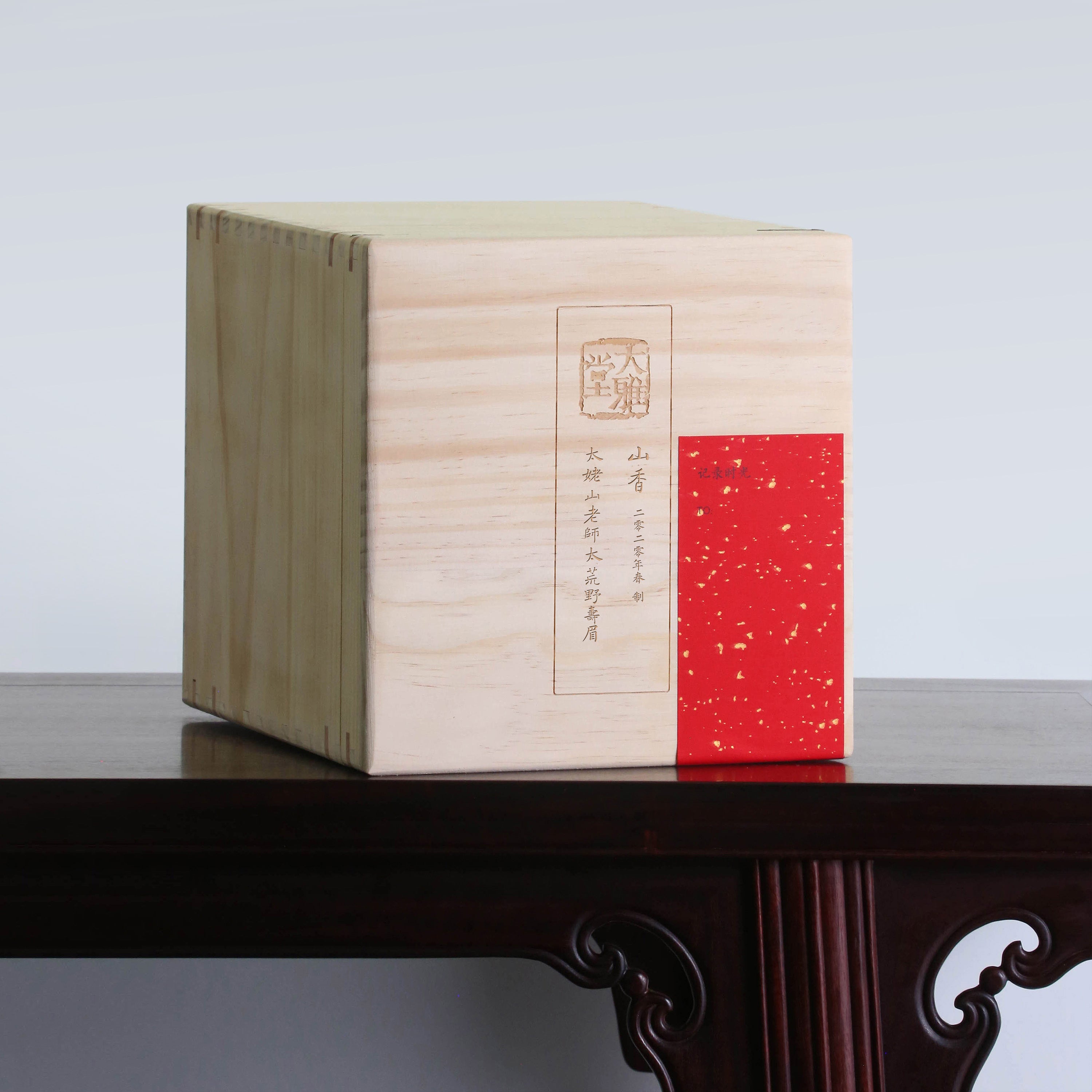
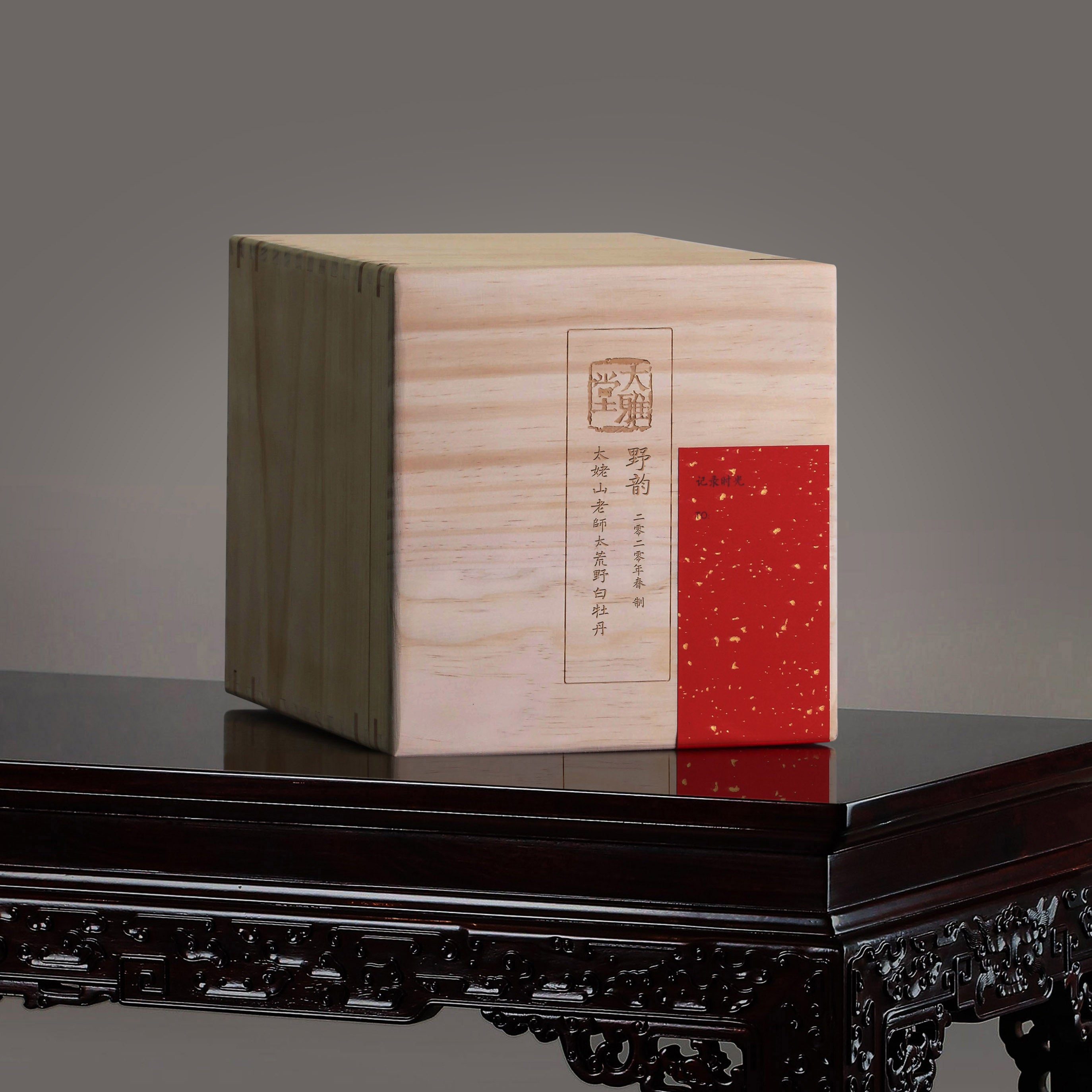
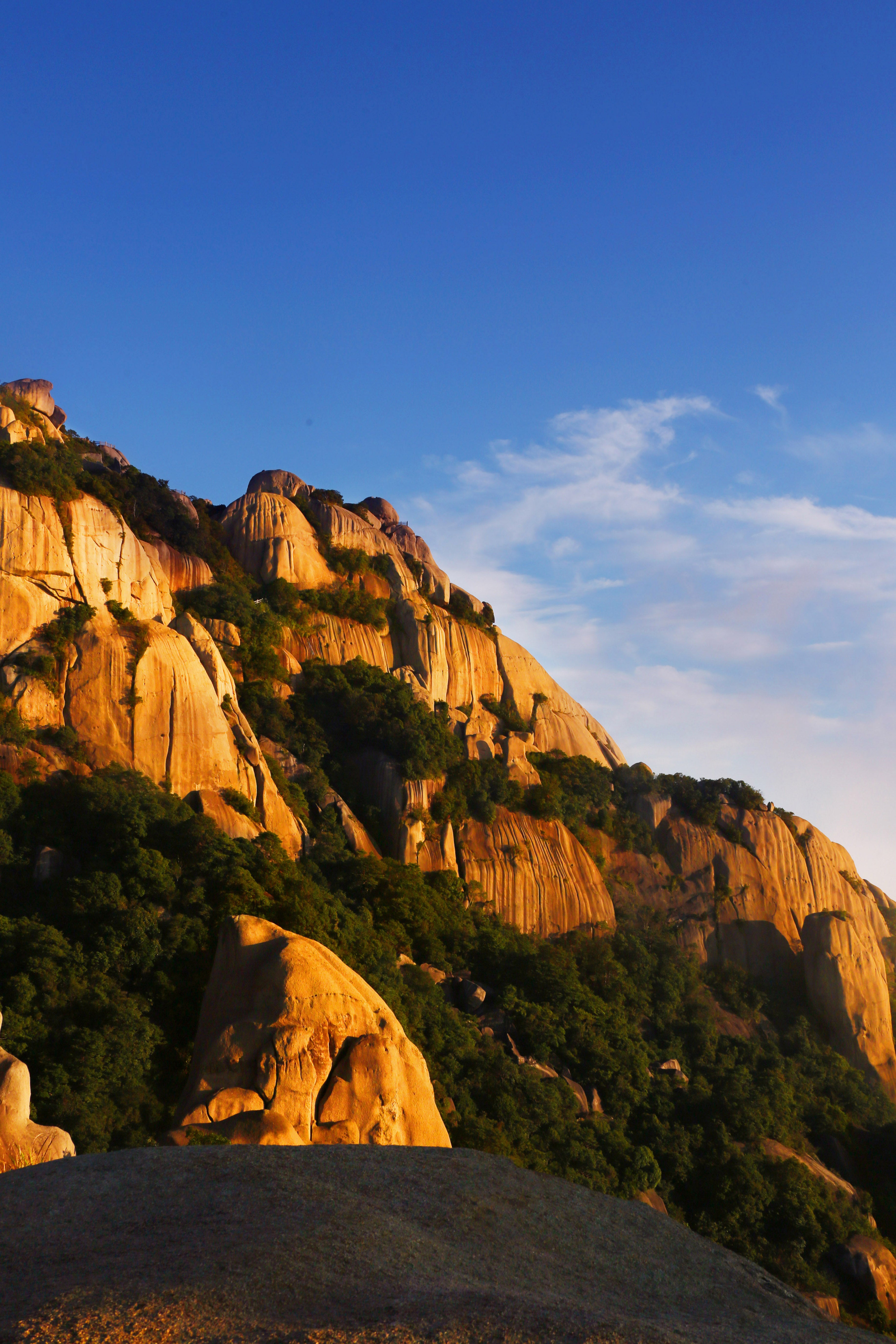

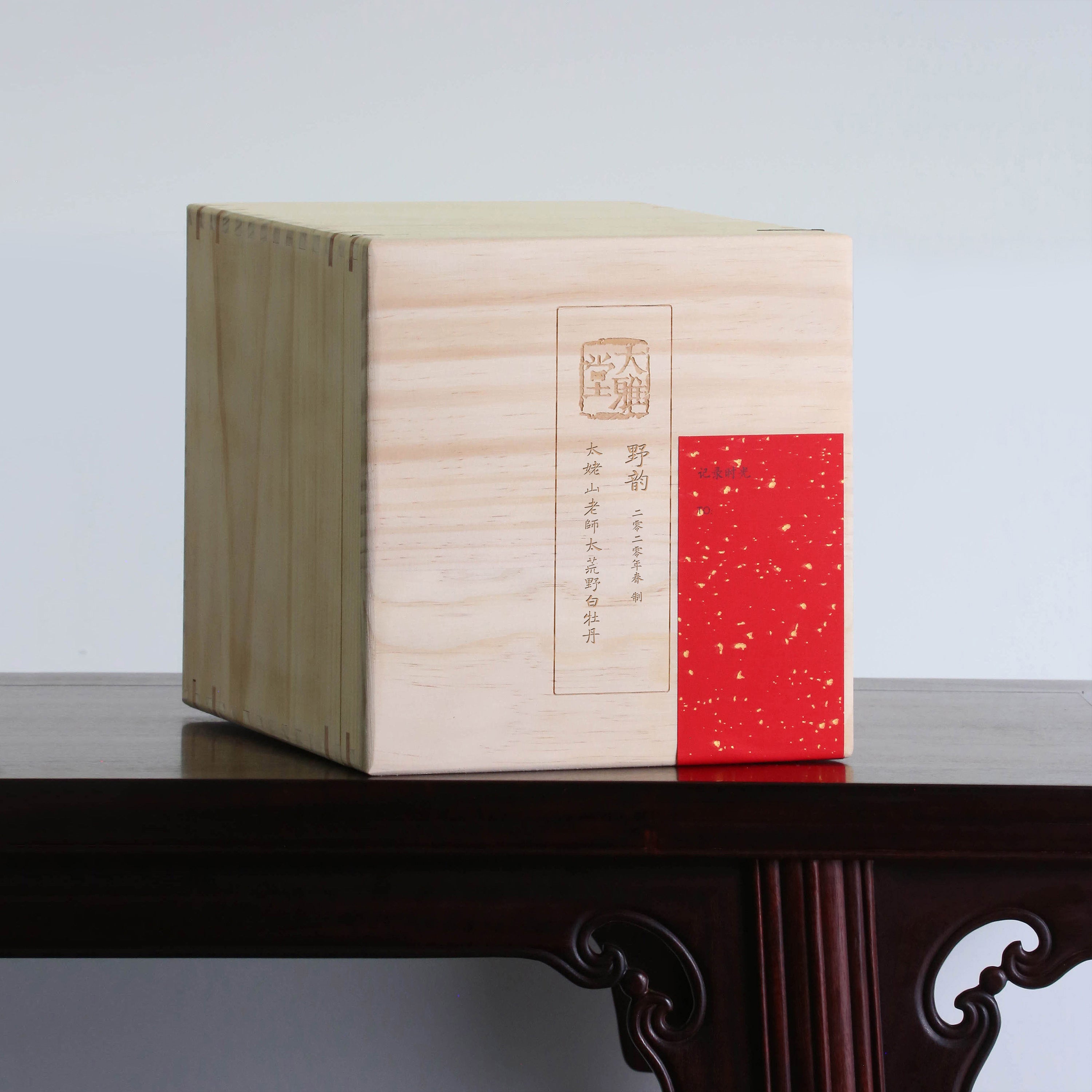
2020 Mountain Fragrance & Wild Charm










2020 Mountain Fragrance & Wild Charm

She cast aside all worldly ties
That year
she was seventeen
That year, she was seventeen. For reasons unknown, she cast aside all worldly ties, draped herself in a plain gray robe, and from then on, she stayed company with a stretch of white tea plantation on Mount Taimu.
In the mountains, she lost all sense of time. Amid the morning bells and evening drums, as mist gathered and dispersed, and stone steps grew warm with the passage of days, she became a 90-year-old Venerable Master before she knew it.
Mount Taimu has stood tall for hundreds of millions of years. The white tea plants here are shrouded in ice and mist all day long. Beside this old temple, the tea bushes have small leaves and unbright colors, often plagued by insects and birds. The monks never used pesticides; instead, they chanted sutras softly to drive the pests away, letting the white tea endure wind and rain, absorb vital energy, and thrive in the most natural way.
Among these plants and trees, the Venerable Master’s story is like aged white tea—holding the mellow charm of time.
Paying respects to the Venerable Master had long been a wish of mine. Her residence was hidden deep in the heart of Mount Taimu, where winding paths twisted around rocks, and houses with walls built against the mountain were dusted with moss.
When we arrived, the Venerable Master was in the Buddhist hall, tapping a wooden fish and paying homage to the Buddha. Upon seeing us, she first brought out wild fruits from the mountains—sweet-tasting peaches and dew-dappled pears—then went to gather firewood and light a fire to make breakfast.
When the meal was ready, I tried to help serve the noodles, but she stopped me: before eating, she always observed three rituals that had remained unchanged for decades.

First, she struck the wooden clapper, and clear notes reached our ears; next, she chanted theSutra of Gratitude, each word earnestly expressing thanks for nature’s gifts; finally, she pinched seven grains of rice and scattered them on the bird feeder, presenting them to the Garuda (Great Golden-Winged Bird) and all sentient beings.
The soft sound of those seven grains of rice struck the heart more deeply than a thousand catties of weight—it was the compassion and reverence she held fast to, day after day.
After the meal, the Venerable Master rinsed the wok with mountain spring water. She poured hot water over it, sprinkled baking soda, and scrubbed it three times with a bamboo brush—even the gaps in the stove were scrubbed until they shone.
In this bowl of noodles deep in the wild mountains, a sense of ritual arose from the heart; it was a respect for life and nature.
she moves with surprising agility—she even has better stamina for climbing mountains than we do.
This was the wild tea plantation she treasures so dearly. The tea trees have thick trunks that bear the marks of time, while their branches and leaves still spread out gracefully. Pointing at one of the old trees, the Venerable Master said, “Some say it’s been hundreds of years, others say a thousand—I can’t be sure. It’s better to just let things be as they are.”
She always insists no pesticides should be used on the tea trees to kill insects, for fear of harming their vital energy and people alike. The trees are also only pruned once every few years—another example of her “letting things follow nature” attitude. And the tea trees, as if understanding her intentions, grow in a leisurely, unhurried way.
Gazing at the tea buds between the Venerable Master’s fingers, my mind wandered back to the young girl who once devoted herself to the monastic life—her plain robe brushing past the tea bushes, as she and the old tea trees became each other’s comfort and support.
Sixty years make a cycle of sixty (a traditional Chinese chronological unit). Countless past events have long faded like smoke, drifting away amid the vicissitudes of time and the unchanging rocks that stand firm here. The world beyond the mountains has undergone earth-shaking changes, with skyscrapers towering everywhere. Yet this wild tea plantation quietly takes shelter under the huge rocks, keeping the Venerable Master company. Regardless of how the world may change, they stand guard over this pure land.

People all say "Beyond the mountains lie more mountains"—but who would have thought that within a cave, there hides yet another cave?
The Venerable Master led us on a walk through the tea plantation and said with great enthusiasm, "Mount Taimu has 360 scenic spots and 72 caves, and each one has a story to tell."
She led us to a small temple; only after pushing the door open did we see a cave entrance hidden behind it. As we walked inside, another cave appeared—it was the Bat Cave, which is shaped like a bat, and indeed, bats live in the crevices of the rocks at the cave’s entrance. "The temple outside is too noisy, and the innermost cave is too cold. Only this middle cave—with temperature just right and perfect quiet—is my favorite place to meditate."
This cave-within-a-cave, like the Peach Blossom Spring described by Tao Yuanming (a renowned Chinese poet of the Eastern Jin Dynasty), is a secret haven the Venerable Master rarely speaks of—one that holds her quiet moments of communion with heaven and earth.
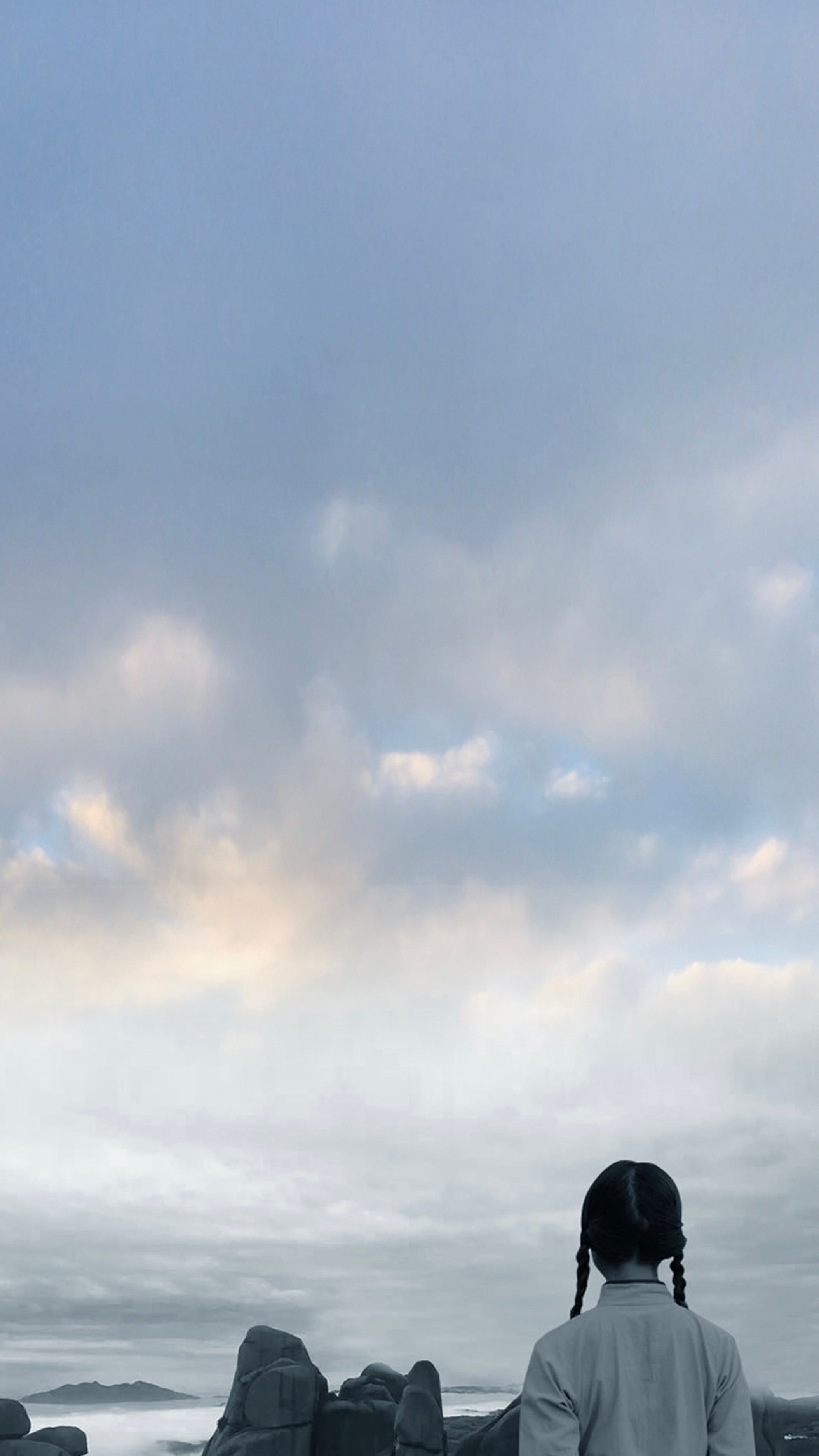
A Bowl of Noodles' Ritual

Buddhist Nun's Ancient Tea Tree

Cave Within a Cave
2020 "Mountain Fragrance" and "Wild Charm" Double Products
The 2020 Taimushan Laoshi Taizhi "Mountain Fragrance" and "Wild Charm" teas both originate from the same wild tea garden next to the old temple on Taimushan Mountain.
"Same origin, same production process" reveals a shared fragrance base, with the essence of Taimu Mountain's unique aroma consistent.
A tiny leaf beside the old temple on Mount Taimu
"Ice and mist" encapsulate the essence of the mountains and fields, and its natural flavor is left for others to describe.
The aged aromas, originating from the same source , exhibit a woody sweetness and a honey-like fragrance.
Style Tea
"Mountain Fragrance" is mellow and robust, while "Wild Charm" is fresh, lively, and gentle.
Year : 2020
Grade : Top-grade Shoumei
Origin : Taimushan Nature Reserve
Varieties: Wild sexually propagated varieties: Fuding Da Bai Cha, Da Hao Cha, mixed with native ancient tea trees from Taimu Mountain.
Process: Traditional process of natural withering and gentle drying without frying or kneading.
Dry tea and liquor color : The dry tea is brownish-yellow and uniform, with a few insect holes showing the care of the tea master for the insects . It has a wild mountain aroma when dry. Liquor color: In 2025, the liquor color changed from apricot white to warm amber color, clear and bright, with a golden ring floating on the bowl wall. It is still clear after 10 infusions.
Aroma and taste
When brewed, it releases a "mountain fragrance," blended with the sweet aroma of aged wood, leaving a lingering fragrance at the bottom of the cup; upon entry, it is refreshing and sweet, with a sweet aftertaste that lingers to the back of the tongue, and a lingering aftertaste that is fresh and invigorating from the mountains.
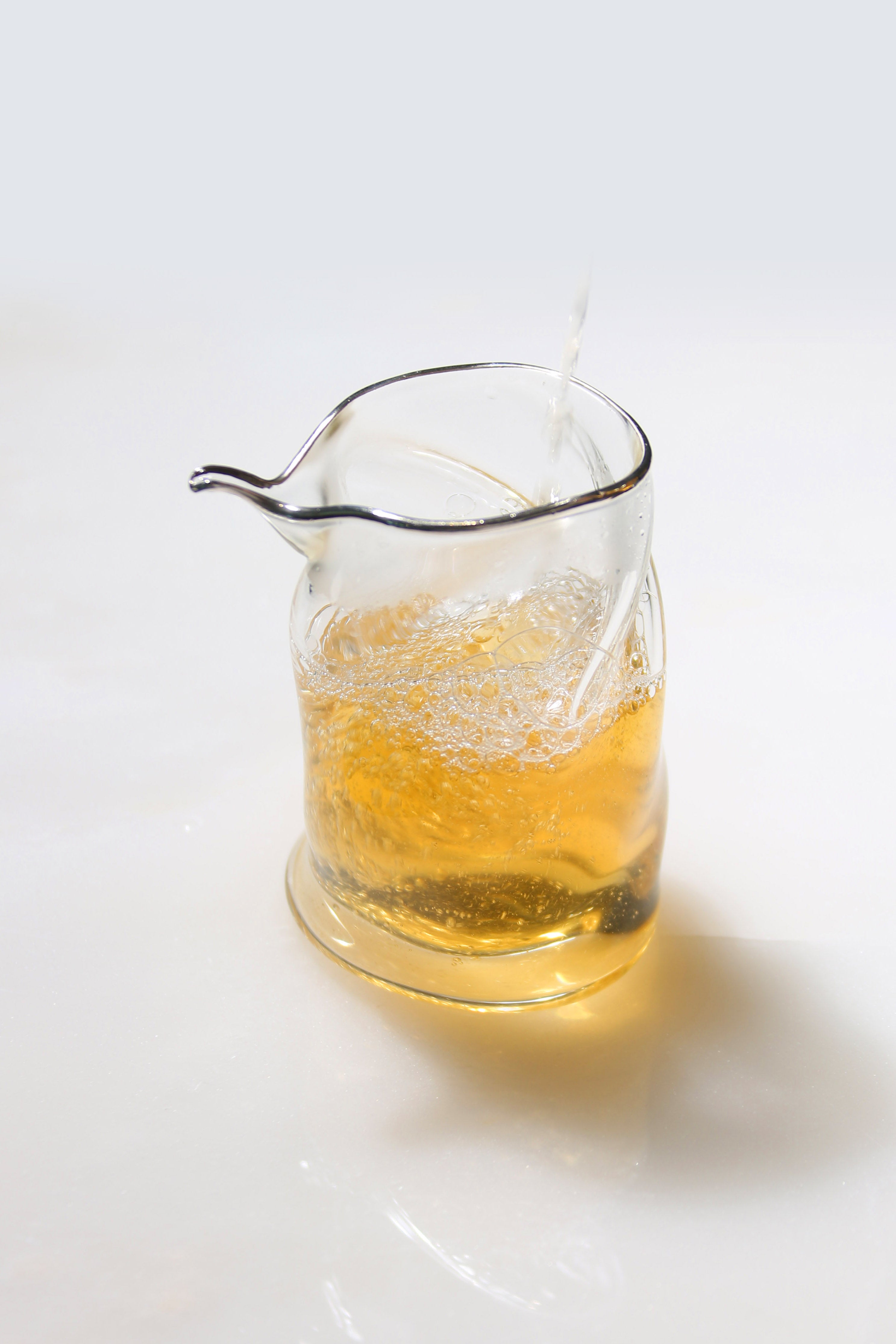
In 2025, the color of "Shanxiang" tea changed from apricot white to a warm amber color, becoming clear and bright, with a golden ring floating on the bowl wall. It remained clear even after 10 infusions.

The tea leaves from the 2020 "Shanxiang" brewing process reveal their natural color.
Year : 2020
Grade : Premium White Peony
Origin : Taimushan Nature Reserve
Varieties: Wild sexually propagated varieties: Fuding Da Bai Cha, Da Hao Cha, mixed with native ancient tea trees from Taimu Mountain.
Process: Traditional process of natural withering and gentle drying without frying or kneading.
Dry tea and liquor color : The harvest season is earlier than Shoumei. The dry tea is covered with silvery hairs and has almost no insect holes . The aroma is fresh and honey-like. The liquor color of 2025 is light amber , which is brighter than Shoumei.
Aroma and taste
The aroma is fresher and more vibrant, with a top note of floral honey, a middle note of misty moisture, and a base note of light aged fragrance; it is sweet and smooth on the palate, with a quick and clear aftertaste and a smooth feeling in the throat.
"Wild Charm" brewing technique photographed in 2020
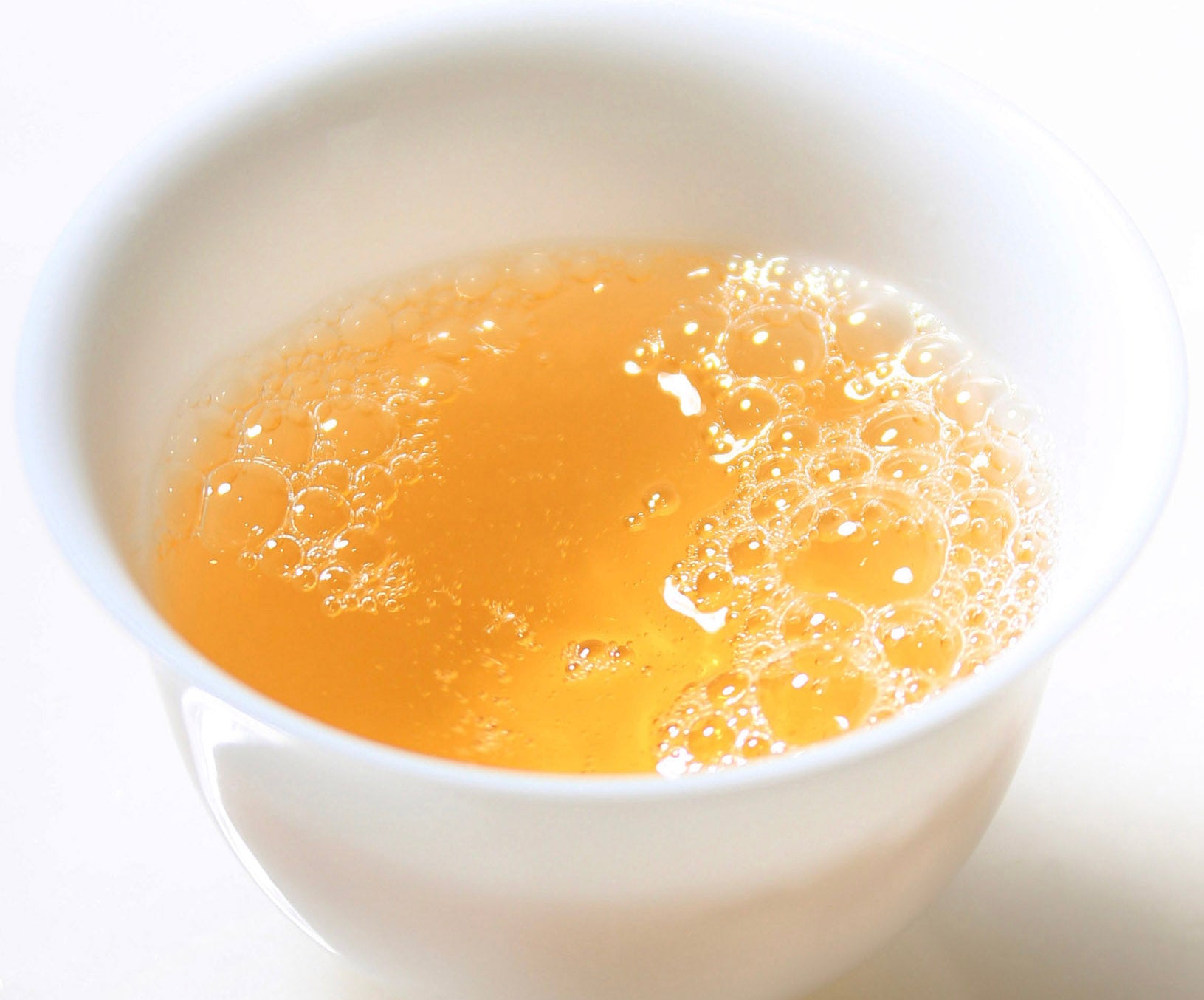
The 2025 "Wild Charm" tea soup will have a light amber color.
Each gram of tea carries a family's 174 years of day-and-night guardianship
Through six generations of tea masters' perseverance
Complex brewing
exacting attention to details
Only to help you taste the true flavor
of tea aroma
Both are 5-year aged wild white teas. When brewing, it is necessary to balance the release of aged aroma and the original wild flavor. The common principles are the same, and the differences are adjusted according to the tenderness of the buds and leaves:
2020 "Mountain Fragrance"
and "Wild Charm" Brewing Guide
brewing
Utensils: 100-120ml white porcelain gaiwan (does not absorb aroma, produces an amber-colored liquor);
Water temperature: Boiling water is sufficient; scald the utensils thoroughly.
Tea quantity: 5g/gaiwan (tea to water ratio 1:20);
Rinse the tea: Pour boiling water over the tea leaves quickly once per second to avoid losing the aroma.
Serving
First 3 infusions: 15-20 seconds (to release the surface aroma);
4-8 infusions: each infusion should be steeped for 8 seconds (to extract the deep, wild flavor of the mountains);
9. After steeping: let it steep for 25-35 seconds (the final infusion will still be sweet and moist).
Precautions
Low stroke along the wall of the gaiwan (reduces impact and protects the integrity of buds and leaves);
Leave 1/5 of the tea in the bottom of the cup before adding more water (to maintain a stable concentration);
Keep the lid closed as much as possible (to lock in the wild fragrance).
water quality
Choose qualified purified water; do not use alkaline mineral water .
(The water quality of commercially available mineral water varies depending on the water source and the brand. So-called "high-quality mineral water" may cause loss of functional components and inhibition of aroma in tea.)
Part 1: The Effects of Alkaline Water on Tea
1. Effects on the color of tea liquor
green tea:
Under alkaline conditions, chlorophyll is easily destroyed (chlorophyll stability decreases at pH > 8.0) , causing the tea liquor color to easily change from bright green to yellow or dark yellow, resulting in turbidity , especially noticeable when brewed at high temperatures. Flavonoids (such as catechins) in green tea are easily oxidized in an alkaline environment, exacerbating the darkening of the tea liquor color.
black tea:
Theaflavins (bright orange-yellow) are easily oxidized to thearubigins (dark red) under alkaline conditions, and further generate dark brown, causing the soup color to change from bright red to dark and lose its transparency .
Other types of tea:
The color of oolong tea, white tea, and yellow tea may be darker due to alkaline water. The color of black tea (such as ripe Pu-erh) will become more turbid, and the color stability of aged aroma substances will also be affected .
2. Impact on taste and texture
Analysis reveals differences:
Tea polyphenols and caffeine: lead to insufficient concentration and bland taste . An alkaline environment inhibits the dissolution of tea polyphenols (bitter substances) and caffeine, reducing the bitterness of the tea soup.
Amino acids and sugars: Disruption of amino acid structure reduces the freshness and crispness.
Mineral influence: Alkaline hard water (containing more calcium and magnesium ions) combines with tea polyphenols to form insoluble precipitates (such as "cloudiness after cooling"), resulting in cloudy tea soup and a rough taste .
Balance of taste: It significantly affects the "richness" of tea soup for teas that rely on polyphenols to support their taste (such as raw Pu-erh tea and high-roasted rock tea), with no noticeable aftertaste and an overall taste that is bland and coarse .
3. Effects on aroma
Volatile aromatic substances: An alkaline environment may accelerate the degradation or transformation of aromatic substances (such as aldehydes and alcohols), resulting in a single aroma profile, especially in light-aroma teas (such as jasmine tea and Anji white tea), where the floral fragrance dissipates easily and may even develop a "mushy" taste.
Aged aroma and woody aroma: For fermented teas such as black tea and aged Pu'er, alkaline water may slightly highlight the aged aroma (pH>8.0) and suppress the fruity or honey aroma.
Second: The adaptability of different types of tea to water quality
1. The interaction between the physicochemical properties of water and tea components
- Hard water (>120 mg/L CaCO₃) : Calcium ions combine with tea polyphenols to form precipitates, reducing the astringency of tea soup (EGCG binding rate can reach 23%), but losing antioxidant activity (Food Chemistry, 2018); Magnesium ions promote caffeine dissolution, and every 1 mg/L increase in magnesium can increase the caffeine concentration by 0.8% (Journal of Agricultural and Food Chemistry, 2020).
- Soft water (<60 mg/L CaCO₃) : Theaflavin dissolution rate increased by 12%, and the brightness of the tea soup increased (L* value increased by 3.2), but the amino acid extraction efficiency decreased (Food Research International, 2019).
2. Supported by scientific experimental data
- Longjing green tea brewing experiment (TDS = 50 vs 300mg/L) : The amino acid content of the tea soup in the soft water group (1.2mg/mL) was significantly higher than that in the hard water group (0.8mg/mL), but the caffeine content was 18% lower (China Tea Processing, 2021); Sensory evaluation showed that the freshness score of the soft water group was 1.7 points higher (out of 9), while the body of the hard water group was 0.9 points higher.
- Research on water quality suitability for Wuyi rock tea : Water containing trace amounts of sulfate (20-50 mg/L) can increase the dissolution of cinnamaldehyde, a characteristic aroma compound of cinnamon, by 24% (GC-MS detection), and significantly enhance the rocky aroma (Tea Science, 2020).
3. Water quality selection recommendations (based on tea)
| Tea | Ideal TDS | Recommended pH | Key ion requirements |
| FTL Green Tea | 30-80mg/L | 6.8 | Ca²⁺<15mg/L, Mg²⁺<5mg/L |
| FTL Oolong Tea | 80-150mg/L | 7 | HCO₃⁻ 40-60mg/L |
| FTL Black Tea | 100-200mg/L | 6.8 | K⁺ 2-5mg/L, SiO₂ 10-15mg/L |
| FTL Pu-erh Tea | 50-120mg/L | 6.8 | Fe³⁺ < 0.1 mg/L |
4. Examples of the impact of special water quality
London tap water (high hardness) : When brewing black tea, the formation of oxalool-calcium complexes leads to "cold turbidity" appearing 30 minutes earlier, with the turbidity (NTU) of the tea reaching 12.5, which is significantly higher than that of the soft water group (NTU = 4.3) (Food Hydrocolloids, 2019).
Kagoshima hot spring water (containing sulfur) : Sulfides react with theaflavins to form methyl flavonoids, which reduces the umami intensity of sencha by 37% (*Journal of the Japanese Institute of Food Science and Technology, 2022).
The quality of water from a particular source can enhance the color, aroma, and flavor of local tea, but using local water requires systematic professional knowledge and is very costly. For non-professionals, mastering the basic principles of "soft and clean water + temperature control" is far more practical than pursuing famous springs from their place of origin.
The precise matching of water and tea is essentially a dialogue of geographical genes, which needs to be built on a multidisciplinary system of geology, food chemistry, heat transfer and other disciplines, and cannot be covered in just a few lines of web pages.
The UK-based AquaSim laboratory has simulated 12 core indicators of Tiger Spring water. However, it lacks the original spring's microbial community (such as Nocardia tea-loving bacteria), resulting in a 27% difference in post-fermentation flavor. In addition, the operation is complex: it requires mastering the "listening to the spring while boiling water" method (stopping the fire immediately when the water first boils), and a temperature error of more than 3°C will disrupt the flavor balance.
The charm of tea ceremony lies in appreciating what suits one's taste.
A pot of purified water is enough.
Don't be trapped by the mystique of water quality.

Wooden box packaging with a sealed bag inside.
The charm of tea ceremony lies
in what suits you as precious
A pot of pure water is enough
Don't be trapped by water quality metaphysics

White tea is cold in nature, and its cooling effect increases with age. It can be used as medicine after three years and become a treasure after seven years of storage.
White tea storage
White tea storage
Avoid light, high temperatures, and odors.
Temperature & humidity: 15-25℃, 50%-65% (to prevent mold and loss of fragrance);
Light Protection & Ventilation: Keep away from direct sunlight (to prevent the decomposition of theaflavins and darkening of the tea liquor) and place in a well-ventilated area.
No odor interference: Keep away from sources of odor such as cooking fumes and spices.
Container selection
Short-term (within 1 year): Purple clay/ceramic jar with ventilation holes (for preservation);
Long-term (over 1 year): Aluminum foil bag (semi-vacuum) + moisture-proof cardboard box (aids conversion).
Taboo
Avoid Storing In: kitchen, bathroom, balcony, or refrigerator.
Minimize container movement. Check every 1–2 months: the tea should remain loose, free of mold, and odorless.
Shoumei/Gongmei: Store per long-term standards — they easily develop jujube aroma with aging.
Peony/Silver Needle: Short-term storage can use a purple clay jar; long-term storage requires moisture protection.
Shelf life
The above storage method allows for long-term storage.






